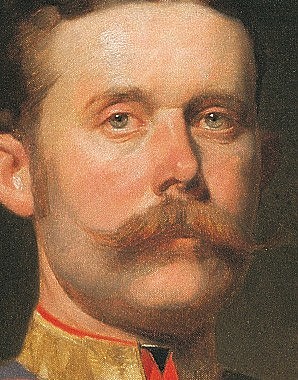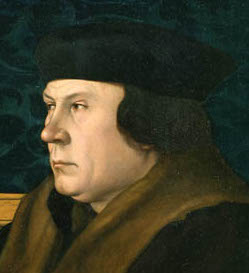 |
| Queen Victoria I |
The past week I have been anxiously awaiting the arrival of my second daughter-today she is 8 days overdue. Needless to say I have been a little bored waiting, especially since my first born daughter came on her due date-waiting is something I have not been used to! So when I saw a programme on TV about Queen Victoria and her relationship with
her daughters I was very keen to watch with my blog in mind.
I will point out that none of this is my own original research and when I use a direct quote from the programme I will accredit it to the relevant historian.
Queen Victoria and Prince Albert had 5 daughters; Princesses Victoria (Vicky), Alice, Helena, Louise and Beatrice. Victoria had a somewhat complex relationship with all of her children in one way or another and reasons for these sometimes difficult relationships varied from child to child-if she considered particular children to be unattractive she would harshly criticise them for it in her letters, or if they supported particular causes that she did not, for example women's suffrage, she would harangue the child in question.
Leading historians in this field, like Dr Piers Brendon and Helen Rappaport describe Victoria as 'controlling' and 'selfish' in her behaviour towards her children. And her behaviour towards her children seemed to get worse when her beloved Prince Albert died in December 1861. Princess Beatrice was only 4 when her father passed away and bore the brunt of her mother's intense grief. Victoria would wake Beatrice up in the middle of the night to take her into her bed to clasp Beatrice to her bosom, sobbing into the small child. Historian Matthew Dennison describes this behaviour towards Bea as a type of abuse as it had 'a profound affect on Beatrice's psyche, on her outlook [and] on her whole personality'.
 |
| Princess Beatrice on her Wedding Day |
Queen Victoria began to rely on her youngest daughter for emotional support and envisioned Bea, her Baby, staying with her until she died, as a sort of replacement for Albert (when Beatrice eventually did get engaged to be married in 1884 Victoria did not speak to Bea for 6 months, despite living side by side in the same house). Victoria's eldest daughter, Vicky, had already married and was living in Prussia and her second eldest daughter, Alice, was married in July 1862 and soon moved to Hesse-but not before becoming her mother's rock in the months after Albert's death. Alice in a way took the place of her father in the sense that she began helping her grieving mother with official business, and was a stable presence in her mother's company, never crying in front of her. But being her mother's rock took its toll on Princess Alice-to the point that the next time her fiance saw Alice following her father's death she was almost unrecognisable to him-according to Dr Karina Urbach Alice went from 'a nice podgy [sic] girl to an anorexic wreck'. Needless to say Alice's impending nuptials filled Victoria with dread as she had come to rely on Alice, and when they did take place just seven months after Albert's death it was a sorry affair, with Victoria herself describing the atmosphere as more of a funeral than a wedding. After 'losing' two daughters abroad to marriage, Victoria would later be determined to keep the other three at home and close to her, as she would often place herself and her needs before those of her own children.
 |
| A Victorian woman breastfeeding |
One issue that did bring Victoria into conflict with two of her daughters was the up and coming trend of breastfeeding your own babies, instead of using the services of a wet nurse. Upper class women in Britain were even getting involved in this trend and both Princesses Vicky and Alice expressed an interest in breastfeeding their babies. This absolutely disgusted the Queen, who thought that it was not the place of a princess of the royal blood to be doing such a thing. Victoria commanded her daughters not to partake in such an 'undignified' act (Victoria's own repulsion towards babies is evidenced in her letters-she always found them to be ugly creatures). But, it seems, both Vicky and Alice were a little too far away from their over bearing Mother to take any notice of her condemnation and breast fed their children regardless. Princess Alice did not escape the wrath of Victoria though who delighted in writing to her daughter to tell her that she had named one of her dairy cows after her.
 |
| Princesses Vicky and Alice in the 1850s at Osbourne |
Alice would end up in Victoria's bad books on more than one occasion-mother and daughter clashed over Princess Helena's marriage and when Alice took a keen interest in nursing and medicine during the Austro-Prussian war. Alice could see Helena's marriage for exactly what it was-a ploy to keep Helena at home in Britain within the grips of the Queen. A pauper Prince was set up for Helena which guaranteed seeing her staying near her Mother and under her Mother's influence. The cash strapped royal in question was Prince Christian of Schleswig-Holstein (Princess Helena and Prince Christian were given as estate in Windsor Great Park where Christian was to become Ranger-concerning himself mostly with the frog population). Princess Alice openly accused her mother of sacrificing her daughter's happiness for her own convenience-this led the Queen to remark that Alice was the true devil of the family. But the upset would get worse when in 1871 Alice set up beds for the wounded in Palace gardens, managing the field hospitals herself whilst heavily pregnant. This of course saw another rise out of Victoria who believed that a princess of the royal blood should not be working so closely with the human body.
 |
| Princess Louise |
Victoria's most rebellious daughter was the beautiful Princess Louise. Dr Piers Brendon describes Victoria as a 'domestic dictator' because of the extent she went to in order to control her daughters. But Princess Louise was not content to just take it and would be the Queen's most rebellious daughter. Louise was keen to become a sculptor and not content with it being just a hobby at home, she wanted to train as a sculptor at a public school. Victoria did not consider Louise's interest in sculpture as very ladylike and did not, at first, want Louise to attend school to study the art form. But Victoria was to give in and Louise enrolled at the National Art Training School-this did not mean, however, that Victoria gave Louise complete freedom to study but rather closely controlled the number of days Louise would attend the school. If Victoria wanted Louise to stay at home any particular day she would just tell Louise that she was to stay at home and help with Victoria's correspondence. Despite this Louise did persevere, becoming the first female sculptor to have a statue erected in a public place (the statue was of Queen Victoria aptly enough).
Princess Louise was also very determined that she was not going to marry some obscure German royal but to marry someone of her own choosing instead. Louise said she would like to marry John Campbell, Marquess of Lorne-at the time this perfectly suited the Queen as she recognised that foreign alliances were seen as unpopular and Victoria quite liked the idea of having fresh blood in the family (it also meant, of course, that another daughter would not be lost to her). It was the first time in centuries that a British princess was allowed to marry outside of royalty. Unfortunately, Louise's marriage was not a happy one and on a rare occasion a child of Victoria had her sympathy rather than her criticism (When Prince Alfred was shot whilst on a visit to Sydney in 1868 Victoria was quite unnaturally unsympathetic).
Queen Victoria may have been overly critical and sometimes quite harsh towards her children, but what she was was loyal to them, especially when they were in need. For example, if there was an impending crisis or a malacious rumour Victoria would use her power to make it right.























